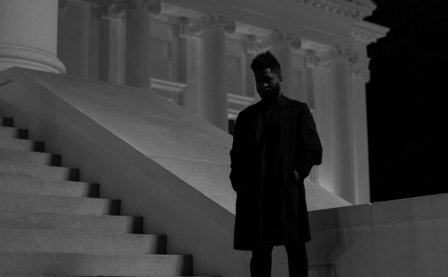SAN BENITO is marine art. Like the maritime painting of the Dutch Golden Age, its tracks — fittingly accompanied by cover art from Chino Amobi — depict the sea amongst land, beaches, and harbors; pictures of sea battles, telling stories of glory, and shipwrecks amid fantastic waves. In this case, though, the narrative is bound in a cultural form with its own “golden age” years, when tango — a black cultural form — became awash, as a society that honored itself on European customs came to take it as elemental to its own identity. Essentially, the form’s soil and rock were eroded, its blackness dissolved and displaced.
On that note, Argentinian producer MORO’s SAN BENITO opens with the sound of water crashing against a hard, unyielding rhythm. On the one hand, the drums of “LIBRES” represent the blackness MORO wishes to return to, but at the same time, their sheer staunchness alludes to a fortification, a barrier in perpetual combat with the water it confronts. After all, the drums of tango are now ingrained with a twofold history: white drummers, black drums; white dancers, black rhythms. With that, SAN BENITO revises questions about racial parity, whether tango’s history returns it or if the exoticism of black culture simply shores up hierarchical borders.
As much as water represents resistance, its waves are also analogous to sound, where opposition manifests in all of the physical sound environment, the socio-cultural, and the internal sound worlds of individuals. In his own words, through a “mixture of Argentinian/Uruguayan/Cuban and all the rhythms that share the same DNA,” MORO feels a duty “to go back to the African part of tango, to reclaim the rhythm” and “make it visible again.” Luigi Russolo described the rhythmic motions of a noise as “infinite” and, as of water’s own continuous cycle, its motions here are equally essential for the maintenance of life and ecosystems.
Still, SAN BENITO isn’t simply about interactions and energy flows; it’s dealing with warfare, whether of sound or sea. “CARETANGO/VALENTINA” and “SALVE SUA VIDA” make this known through samples of brandished swords — a symbol of power, justice, and authority — and creaking boards. Embellished with jittery strings and a stormy sonic backdrop, it conjures images of naval wars. “ARREPRIENTANSE” is similarly abrasive, but with dog barks signifying attack and restraint.




